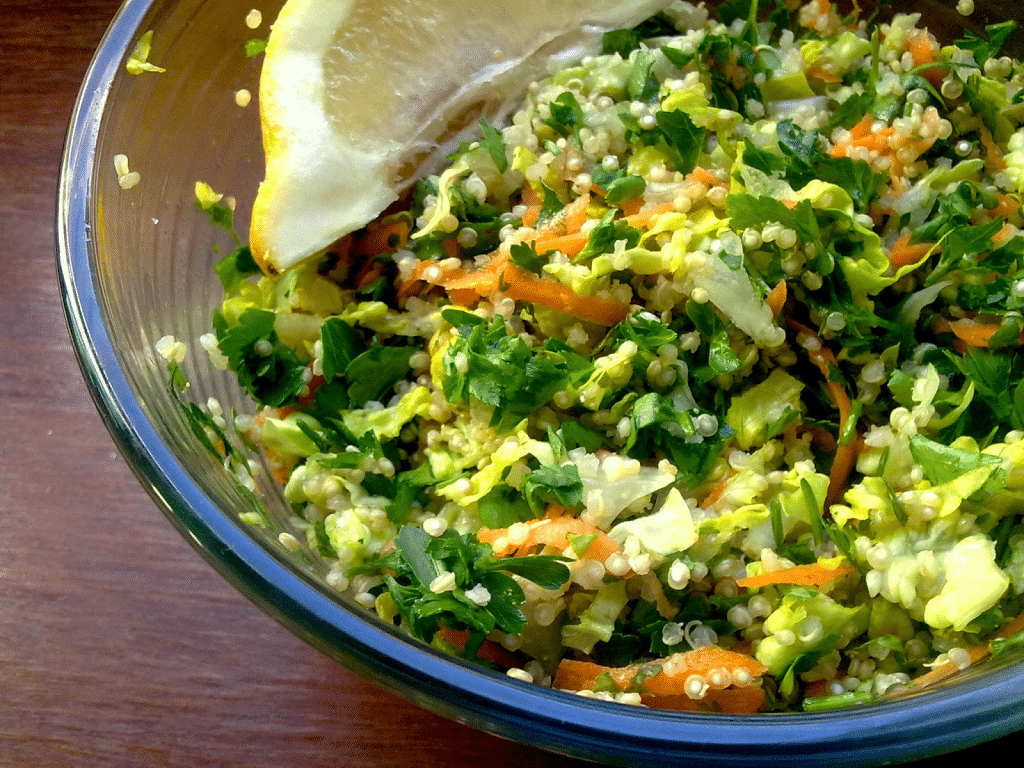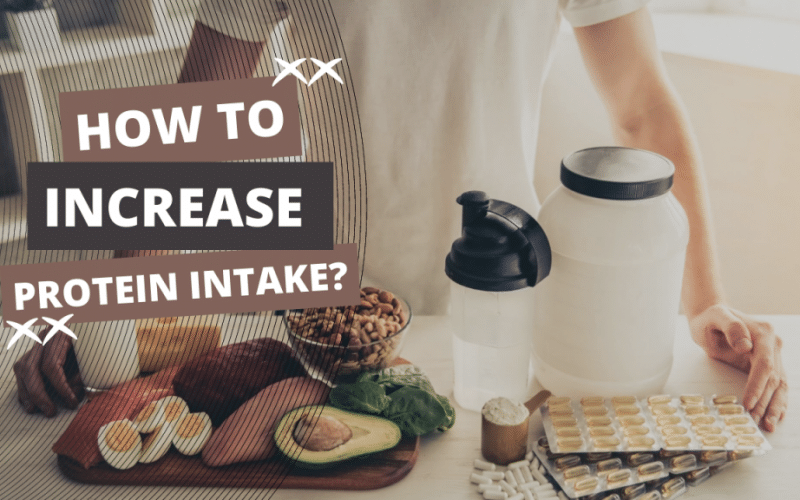Getting enough protein isn’t just for hard-core gym goers and bodybuilders — it plays a key role in overall health. Protein helps your muscles recover, supports healthy hair and skin, and ensures efficient metabolism of essential hormones.
Increasing your daily intake of high-quality protein can make all the difference in how you look and feel. While the Daily Value (DV) for protein is 50 grams per day, the Mayo Clinic Health System recommends consuming at least 15-30 grams of protein at every meal – that’s 75 to 90 grams a day.
However, knowing how to increase your protein intake can be difficult, especially if you’re already following a strict diet. In this article, we’ll share 10 great ways to get more protein in your diet. Read on to find out how!
10 Great Ways to Increase Protein Intake
Now that you understand why protein is so important, let’s look at 10 easy ways to increase your daily protein intake.
1. Start Your Meals with Protein
Eating protein first when you sit down to a meal is one of the easiest and most effective ways to increase your protein intake. Not only will it help you feel more satiated throughout the meal, but it will also help you get that necessary daily dose of protein without having to resort to unhealthy snacks and processed meals.
Protein takes longer for your body to break down and digest, so by eating this nutrient first, you’ll feel fuller for longer. Consuming protein also decreases ghrelin, a hormone associated with hunger, making it easier to resist cravings and stick to your daily meal plan.

Eating high-quality proteins first can also have positive effects on muscle growth, recovery, and repair. Some good sources of protein for breakfast include eggs, Greek yogurt (or any other full-fat yogurt), and cottage cheese.
2. Choose High-Protein Snacks
Choosing high-protein snacks like cheese is another great way to increase your protein intake. Protein not only helps your body recover and repair essential hormones but also helps you feel satiated longer, aiding in weight management and making it easier to resist cravings.
Cheese is an excellent source of protein – a one-ounce slice of cheddar cheese contains 7 grams of protein. High-protein, low-carb snacks such as string cheese and nuts are also great options that are both tasty and filling.
You can also increase your protein intake with other high-protein snacks like edamame, hard-boiled eggs, or yogurt. For a sweet treat, try dark chocolate – it’s an amazing source of antioxidants and protein.
3. Add Protein Powder to Your Smoothies
Adding protein powder to your smoothies is also a great way to increase your protein intake. Protein powder not only boosts the nutritional value of your smoothie but also helps you get in an extra 20-30 grams of protein per scoop.
One of the best ways to add high-quality protein to your smoothie is through whey or plant-based protein powders. Whey is a complete source of essential amino acids, which are the building blocks for muscle growth and repair. It’s quickly absorbed by the body and can be found at almost any health food store or online retailer.
Plant-based proteins offer many of the same benefits as whey, like increased satiety and muscle growth, plus they’re also typically gluten- and dairy-free. Popular options include pea, soy, hemp, chickpea, and rice proteins – they’re all excellent sources of vegan-friendly amino acids.
4. Swap Cereal for Eggs
Swapping cereal for eggs is an easy and delicious way to increase your daily protein intake. A one-cup serving of oatmeal contains only 5 grams of protein, while three large eggs contain 19 grams of protein.
In addition to nearly quadrupling the amount of protein, eggs also contain choline and selenium, two essential nutrients that have numerous health benefits. Choline helps support liver function, while selenium can help boost immunity and reduce inflammation.
Eggs are also incredibly versatile and easy to prepare – they can be boiled, scrambled, poached, or even made into an omelet in just a few minutes. If you’re looking for a more substantial meal, try adding some cooked vegetables to the mix for a healthy breakfast full of vitamins and minerals.
5. Sneak in Some Nuts and Seeds
Nuts and seeds are an easy way to sneak in some extra protein. They’re also incredibly versatile and can be added to salads, smoothies, or simply eaten as a stand-alone snack.
Almonds, walnuts, cashews, and pistachios are all excellent sources of plant-based protein. An ounce of almonds contains 6 grams of plant-based protein, while an ounce of walnuts contains 4 grams. Cashews have 5 grams per ounce, and pistachios have 6 grams per one-ounce serving.
Seeds such as chia seeds, hemp hearts, and flaxseed are also full of essential amino acids and healthy fats that help you stay fuller longer. Chia seeds contain 4 grams of protein per ounce, hemp hearts have 10 grams per ounce, and flaxseed has 8 grams per ounce.
6. Upgrade Your Grains
Upgrading your grains is another great way to boost your protein intake. Whole grains are excellent sources of fiber, vitamins, and minerals, but they’re also packed with protein.

Quinoa, a staple grain in many healthy diets, contains 8 grams of protein per cup. Other high-protein grains include oats (6 grams per cup), buckwheat (5 grams per cup), and bulgur wheat (5 grams per cup).
Not only do these whole grains provide a substantial amount of protein, but they’re also incredibly versatile and can be used in a variety of recipes.
Quinoa is an excellent source of complete proteins, meaning it contains all nine essential amino acids that your body needs to repair muscles and bones. It’s often used as the base for vegan bowls or mixed into salads for added protein and flavor.
7. Try Tempeh and Tofu
If you’re feeling adventurous, why not try tempeh and tofu? Both are fermented soy products that are high in protein and contain a variety of essential vitamins and minerals.
Tempeh is an excellent source of complete proteins – one cup contains 31 grams of protein as well as probiotics which help support healthy digestion. It also contains high amounts of calcium, iron, phosphorus, and magnesium.
Tofu is another great plant-based option with 10 grams of protein per half-cup serving. It’s incredibly versatile and can be used in dishes like stir-fries, curries or even blended into smoothies. Tofu also has the added benefit of being low in fat and calories while still providing plenty of nutrition.
Both tempeh and tofu can be used in dishes like stir fry, curry or even as the base for vegan burgers. They’re also incredibly versatile and can be cooked in a variety of ways – including grilling, baking, or even pan-frying.
8. Replace Regular Yogurt with Greek Yogurt
Greek yogurt is a great way to get some extra protein without sacrificing taste. It’s made from strained milk, which removes much of the lactose and increases the amount of protein per serving.
Regular yogurt usually contains about 5-7 grams of protein per cup, while Greek yogurt can have up to 20 grams of protein per cup. Greek yogurt is also packed with probiotics which help support healthy digestion and keep your gut bacteria balanced.
Greek yogurt makes an excellent breakfast option or snack – just be sure to opt for plain varieties to avoid added sugars and preservatives. You can add fruit, nuts, or seeds for flavor and texture or even use them as a base for smoothies and dips.
9. Go for Lean Animal Protein Sources
If you’re looking for an animal protein option that won’t weigh you down, try lean sources like chicken breast, turkey breast, and tuna.
All these options are low in fat and high in protein – 3 ounces of chicken or turkey will give you about 23 grams of protein, while 3 ounces of tuna has 22 grams. These proteins are also rich in essential vitamins and minerals like iron, magnesium, zinc, and B vitamins, making them great additions to a healthy diet.
In addition to being a great source of protein, lean meats are incredibly versatile and can be cooked in just about any way you please – grilled, broiled, baked, or even pan-fried. You can also add them to salads, soups, and casseroles for an extra protein boost.
10. Eat Canned Fish
Last but not least, canned fish is an excellent source of protein and can be enjoyed in a variety of ways. Canned salmon and tuna are both packed with essential Omega-3 fatty acids, which help support heart health and provide about 22 grams of protein per 3 ounces.

Canned fish is also incredibly easy to prepare – just drain the liquid, break up the fish into smaller pieces and add it to salads or sandwiches. You can also flake it over pasta dishes for a protein boost or mix it with mayo for an easy tuna salad.
Adding canned fish to your diet is a great way to get in some extra protein without having to cook – just be sure to look for varieties that are low in sodium and free from added sugars or preservatives.
Wrapping Up
These are just a few of the many ways you can increase your protein intake. Experiment with different sources and find what works best for you – your body will thank you! With a few strategic changes to your diet, you can easily boost your protein intake and reap the benefits of a high-protein diet.






